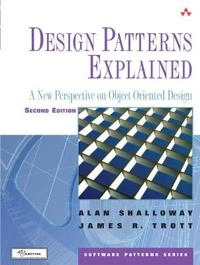

Design patterns explained : a new perspective on object-oriented designUpplaga 2
- Upplaga: 2a upplagan
- Utgiven: 2005
- ISBN: 9780321247148
- Sidor: 480 st
- Förlag: Addison-Wesley
- Format: Häftad
- Språk: Engelska
Om boken
Åtkomstkoder och digitalt tilläggsmaterial garanteras inte med begagnade böcker
Mer om Design patterns explained : a new perspective on object-oriented design (2005)
2005 släpptes boken Design patterns explained : a new perspective on object-oriented design skriven av Alan Shalloway. Det är den 2a upplagan av kursboken. Den är skriven på engelska och består av 480 sidor. Förlaget bakom boken är Addison-Wesley.
Köp boken Design patterns explained : a new perspective on object-oriented design på Studentapan och spara uppåt 46% jämfört med lägsta nypris hos bokhandeln.
Referera till Design patterns explained : a new perspective on object-oriented design (Upplaga 2)
Harvard
Oxford
APA
Vancouver



















